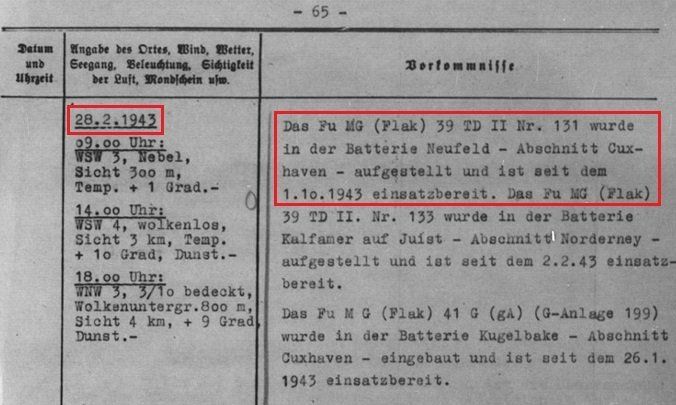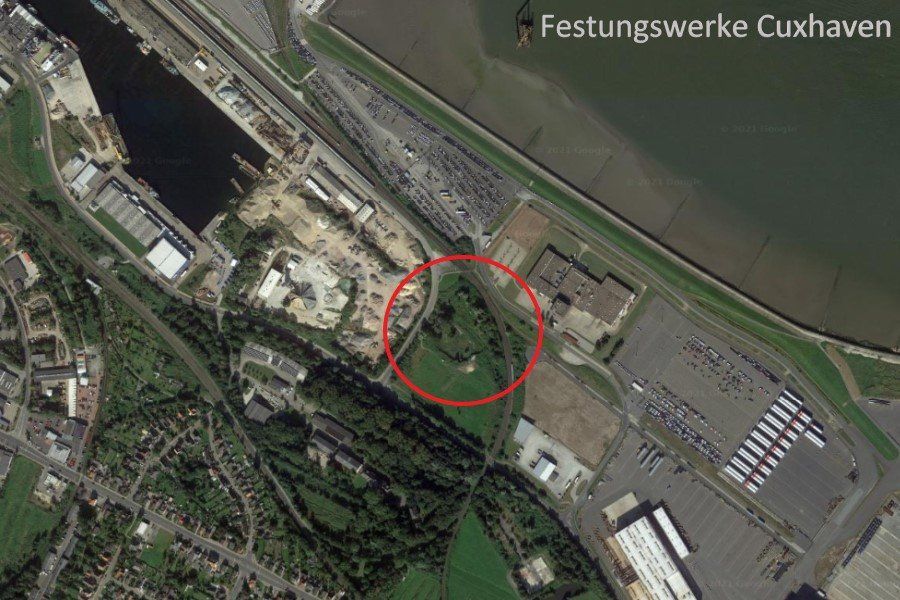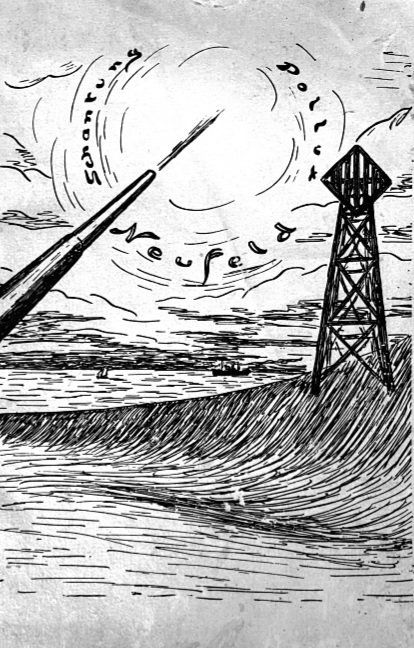
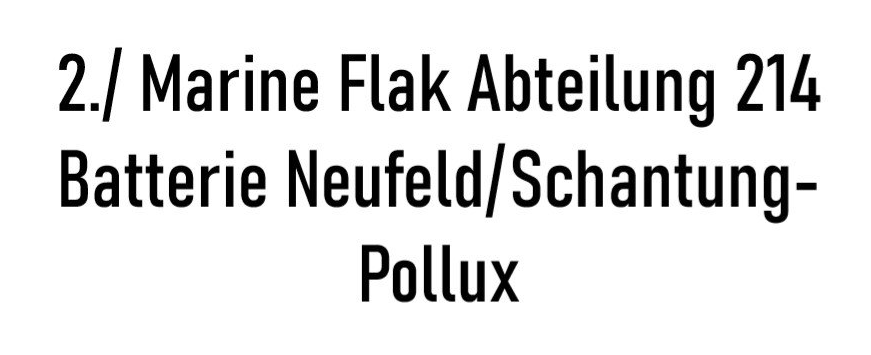
In the present port area of Cuxhaven, in the eastern curve of the Baudirektor-Hahn-Straße, there was also a heavy air defense position during the Second World War.
The 2nd Battery "Neufeld" of the Marine-Flak-Abteilung 214 in Cuxhaven-Groden was created - in terms of personnel - at the end of September 1939 from a merger of the Battery "Schantung" of the IV. MAA, which had been based there since the beginning of the war and whose name it bore until March 1940, and the Battery "Pollux", which had migrated from Swinemünde-Käseburg and had already been manned by the same team in 1938 and which belonged to the III. MAA. The 2nd position was in the Cuxhaven district of Groden, exactly between the then mine depot and the former Hadler Seebanddeich. On its west side was the road to the quarantine station in Cuxhaven.The term "Schantung" refers to the southern Chinese city of "Shandong", which was part of the German enclave "Tsingtau" from 1897 to 1914. Marine flak units were often named after places from the colonial era.The name However, it is difficult to determine the meaning of "Pollux" in relation to the anti-aircraft unit. In Greek mythology, it refers to the son of Zeus and twin brother of Castor. Otherwise, there is a 4,022-meter-high mountain with the same name in the Welsh Alps.
As early as September 8, 1939, the entire Pollux battery was transported from Swinemünde and moved towards the North Sea. After England and France entered the war, it was expected that there would be more enemy fighter aircraft flying into the Reich.

Quelle: Kriegskronik der Batterie Schantung-Pollux-Neufeld

The soldiers used the three-week waiting period at what is now the Lichtenberg Gymnasium Cuxhaven to further their military duties. They also made extensive use of general activities such as physics, chemistry, biology, sports and other learning opportunities offered by their quarters. In between, however, there was also plenty of free time in which the area around the city could be explored in depth. All in all, the "waiting period" at school was described as very pleasant. On September 29, however, the Polluxers were put on the march again to move into their new battery "Schantung" in Groden.
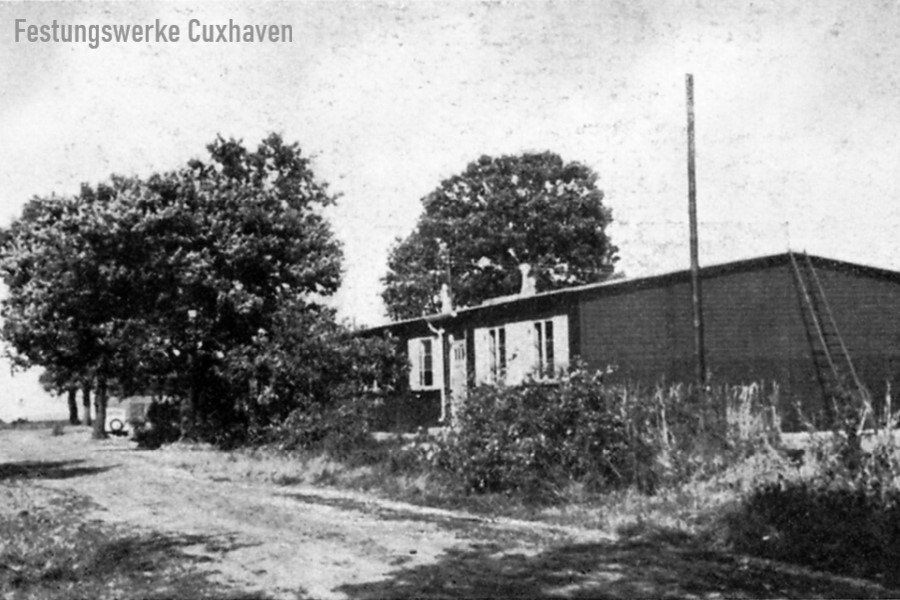
One of the residential barracks on the edge of the battery area.Source: War chronicle of the Schantung-Pollux-Neufeld battery
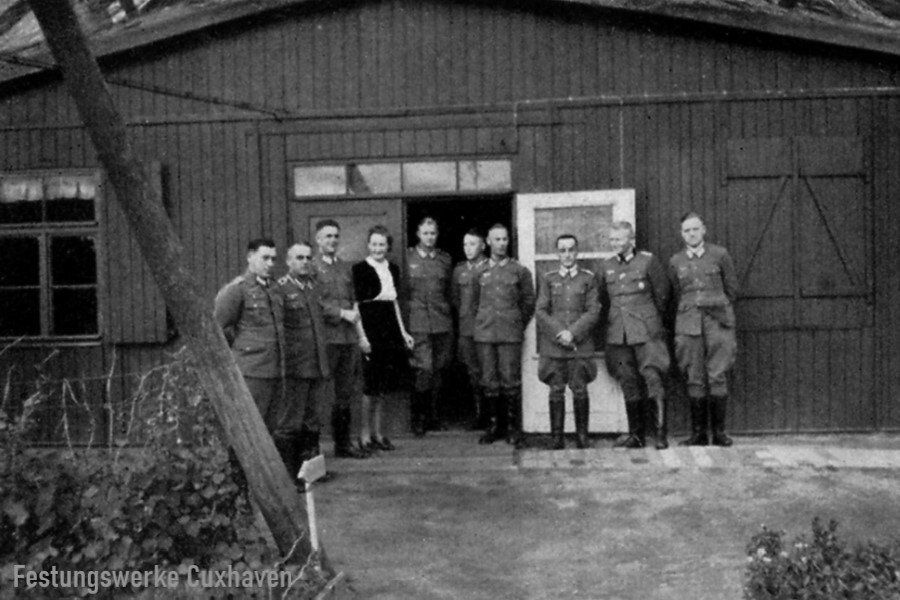
In front of the staff barracks.Source: War chronicle of the Schantung-Pollux-Neufeld battery
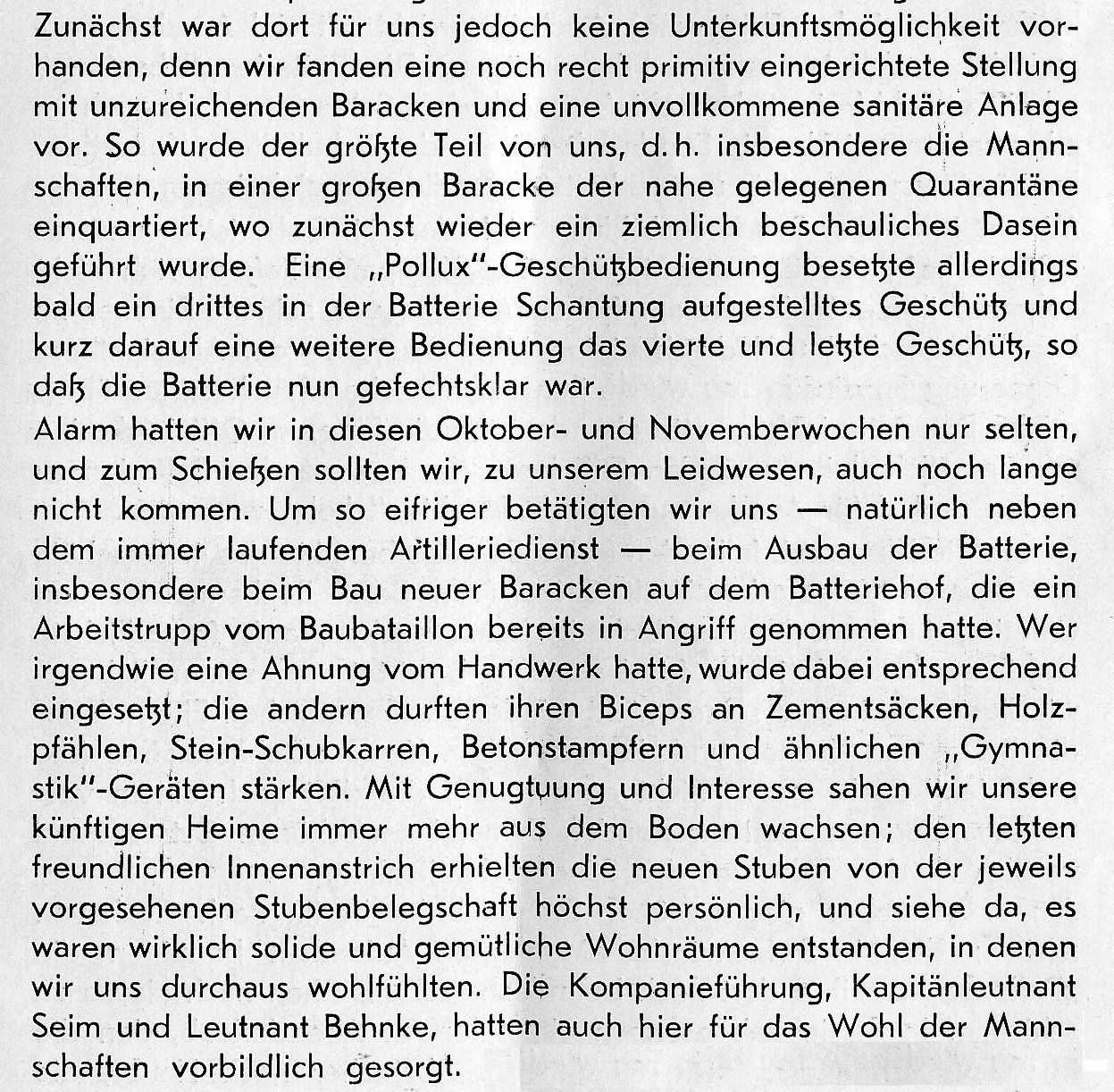
Quelle: Kriegskronik der Batterie Schantung-Pollux-Neufeld
As described in the text on the left, the local conditions were initially not yet complete and primitive. But as the work progressed, the situation gradually improved. On November 1st, the crews of the control center and the operators of the 1st and 2nd guns were finally able to move into the corresponding living quarters. The merging of the "Schantung" and "Pollux" batteries inevitably resulted in a surplus of personnel. This then led to some assignments to other units, mostly to batteries of the MA.FLA.A. 214. At the end of the training, the entire battery personnel were transferred to the gunnery course at the Flak School in Zempin (MVP.) at the end of November 1939. The "Schantung - Pollux - Neufeldt" position itself, like the other batteries, initially consisted of four older, heavy 8.8 cm guns, which were replaced by 10.5 cm SKC/32s in 1942. In the middle of the position was the corresponding command device for target acquisition. Two light 20 mm anti-aircraft guns were set up outside to protect against low-flying aircraft. There were also a few residential barracks, an office, the staff barracks and other light buildings as well as the ammunition bunker. The area was surrounded by a small protective wall against splinter effects and a corresponding fence.
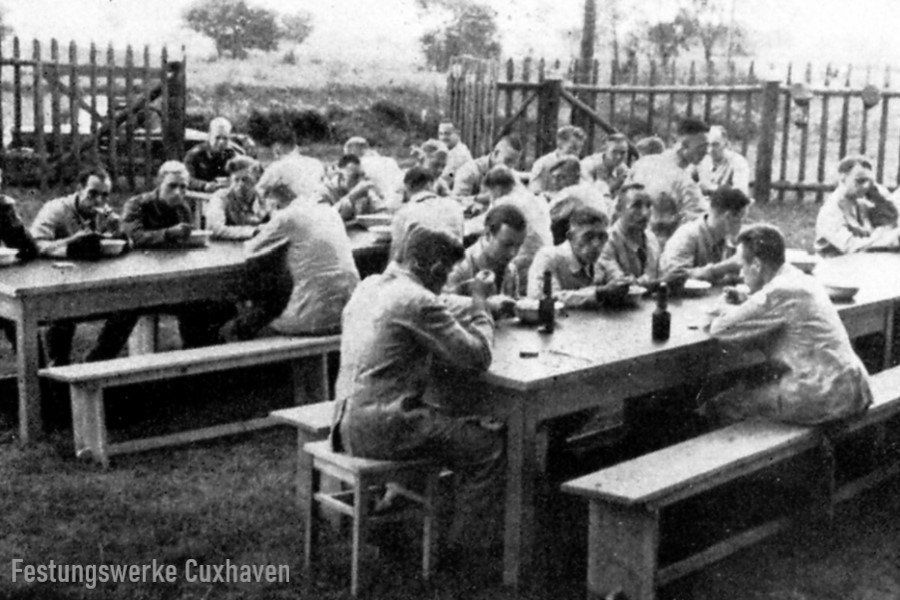

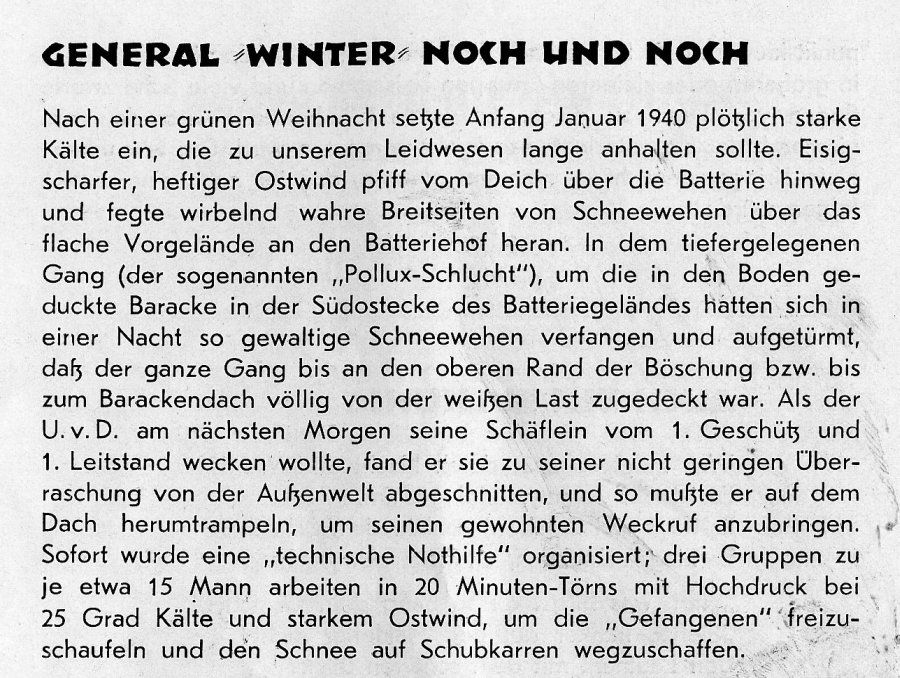
Quelle: Kriegskronik der Batterie Schantung-Pollux-Neufeld
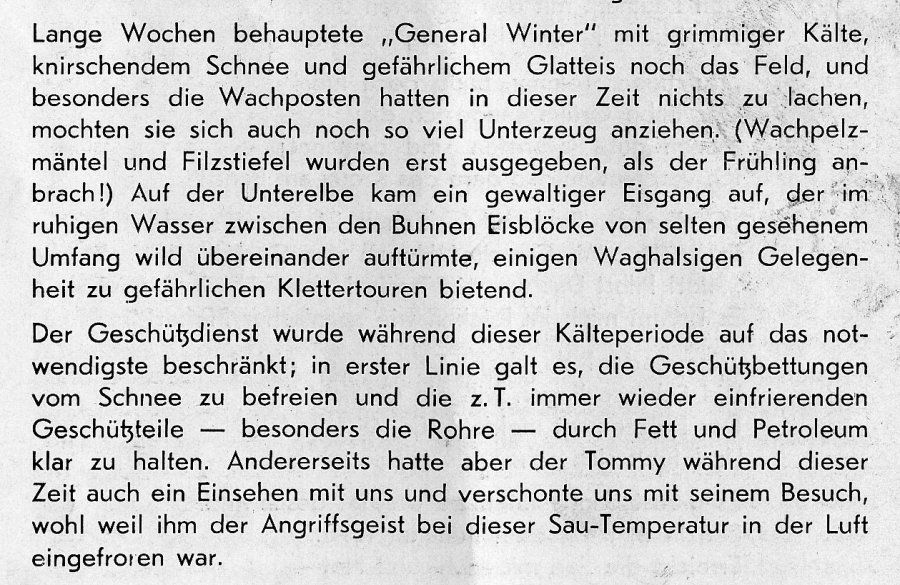
Quelle: Kriegskronik der Batterie Schantung-Pollux-Neufeld
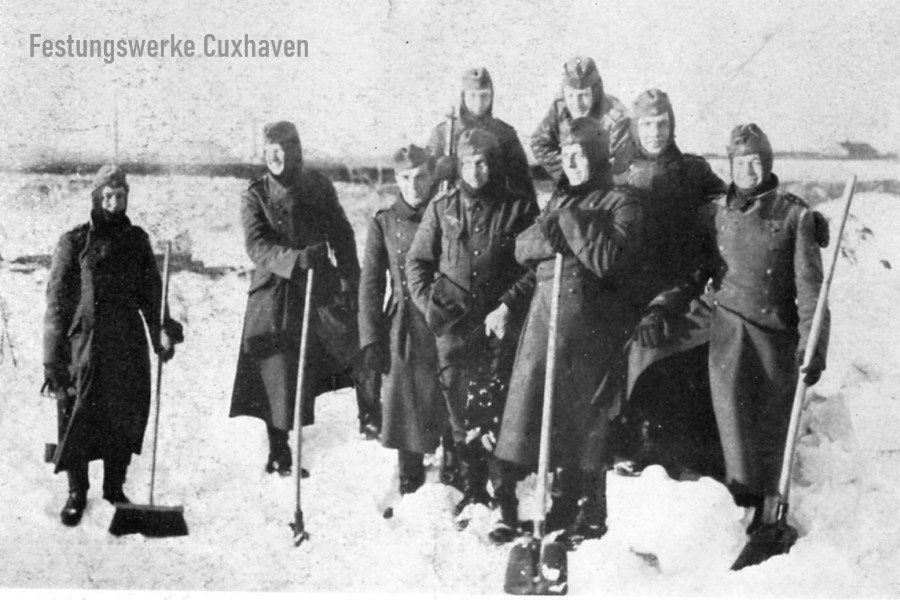

After the end of the harsh winter of 1940, the second barracks for the crews of the 3rd and 4th guns and the 2nd control center were ready for occupancy. The crews finally had their final, but apparently only satisfactory, accommodation. The battery yard itself was still an overgrown and shapeless piece of earth. Clay and loamy soils created a terrible swamp every time it rained, and especially during the thaw in spring. To put an end to this once and for all, the yard was completely dug up and the connecting paths were paved with tamped slag. Outside, beds were laid out and planted with whatever could be found. All types of cabbage, carrots, kohlrabi, radishes, cucumbers, tomatoes and many other plants provided plenty of variety.

Tierfarm Neufeldt
In order to be served more than just vegetarian food, it was decided to set up a battery-owned animal farm. 22 ducks, 50 geese, 20 chickens, 5 pigs, 1 sheep, 50 rabbits, the company dog "Mucki" and various cats ultimately made up a small zoo.
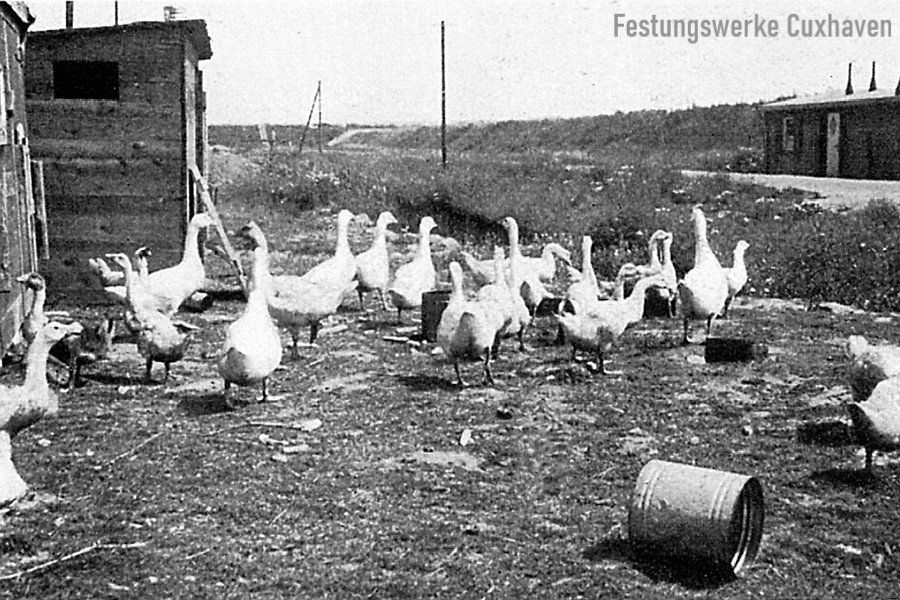
Until the end of 1939, despite good weather, the Allied flights up the Elbe were still limited, so that the crews of the Schantung Pollux - Neufeldt battery had not been able to fire a shot. In addition, the position was set to "target fire" according to orders. This meant that an aircraft could only be fired at if it was clearly detected by the E-measuring device. It was not until mid-1941 that a new, modern E-measuring device, the FuMO 213 (=FuSE 62 D Würzburg), was introduced, which significantly improved target location. On July 21, 1940, the position fired its first live shot at an enemy aircraft under target fire. However, it could not be determined whether any hits were made. As the war progressed, the position mainly fired plan fire (scattered fire at high altitudes). The command device determines the altitude of the approaching aircraft and calculates how far ahead the aircraft had to be held in order to hit the targets under continuous fire.
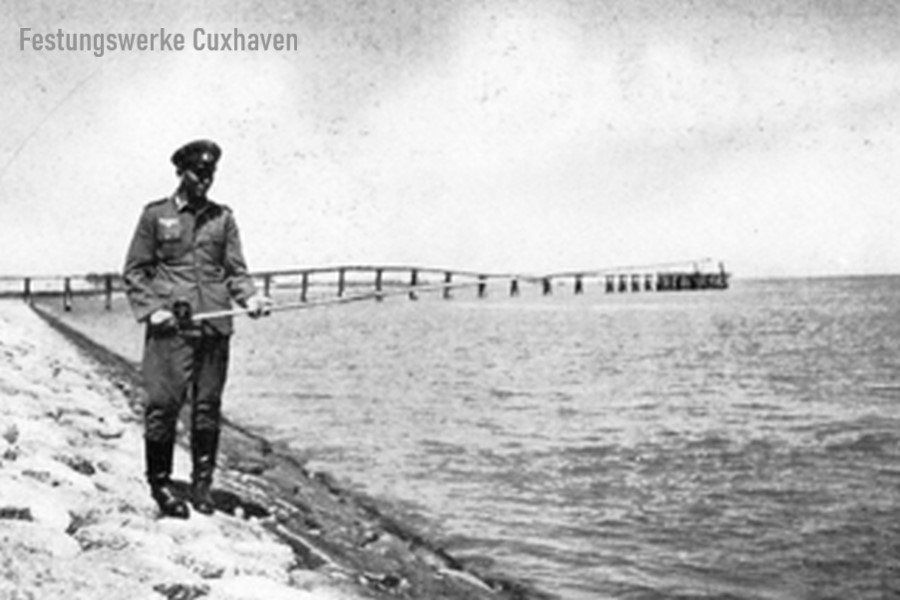
The battery commanders until the end of 1940
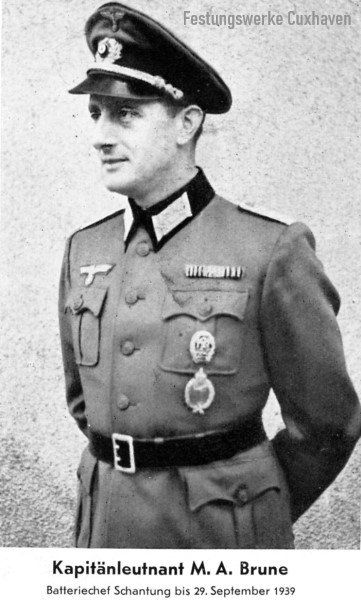



Football game on the sports field of the minesweeper port.

Personal hygiene was also important back then.
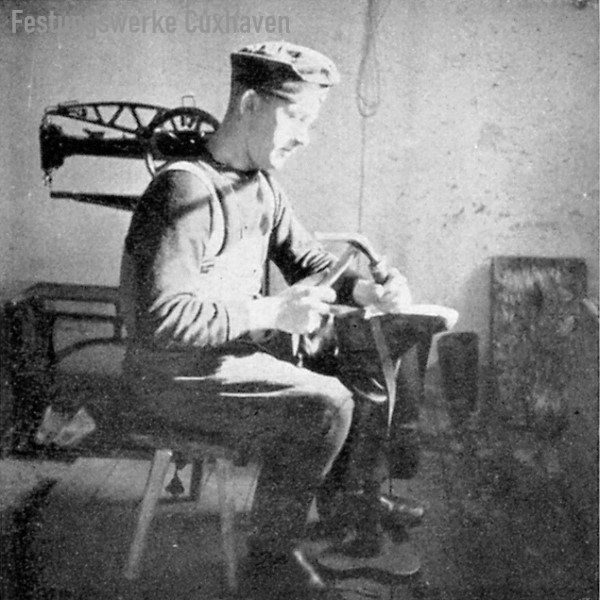
The shoemaker in his workshop.

Die Bedienung eines Stromerzeugungsaggregates.
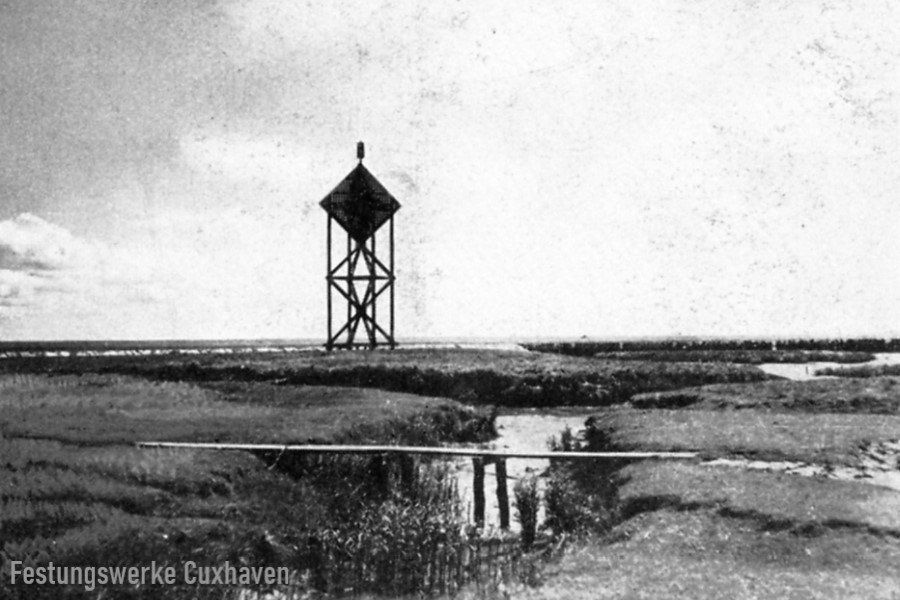
The then called "Black Bake" or Groden Bake.
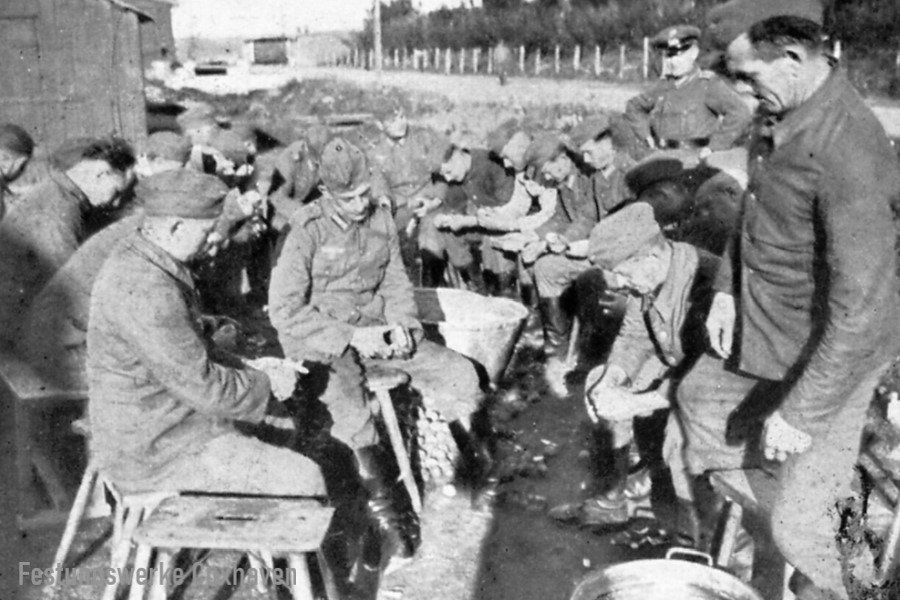
Beim gemeinsamen Kartoffeln schälen.

The battery crew at the end of 1939

Officers on the roof of the combat command bunker.
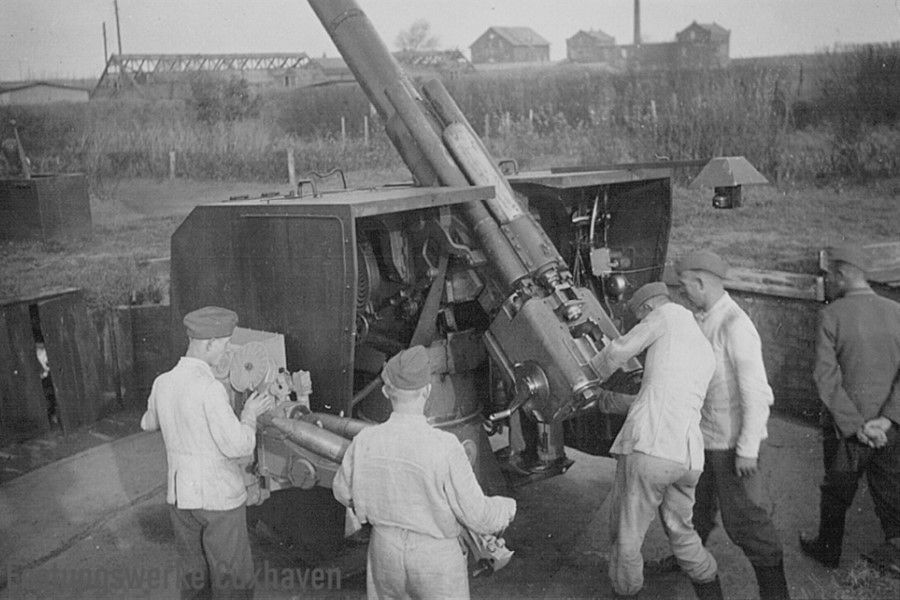
One of the 8.8 cm anti-aircraft guns from the Neufeld position. The photo was probably taken between 1939 and 1940. In the background you can see the quarantine station on the Groden dyke, in front of it a barrack under construction. To the left of the projectiles you can see the ignition machine with which the altitude values were transmitted from the command device to the time fuses of the grenades.
Four photos of the light anti-aircraft position on the Groden Seaband Dike, it was part of the protection of the Neufeld battery against attacking low-flying aircraft. The gun was evidently on a wooden raised stand that protruded above the top of the Elbe dike. The photos show naval helpers at the 2 cm anti-aircraft gun, the date of the photos shows October 8, 1943.
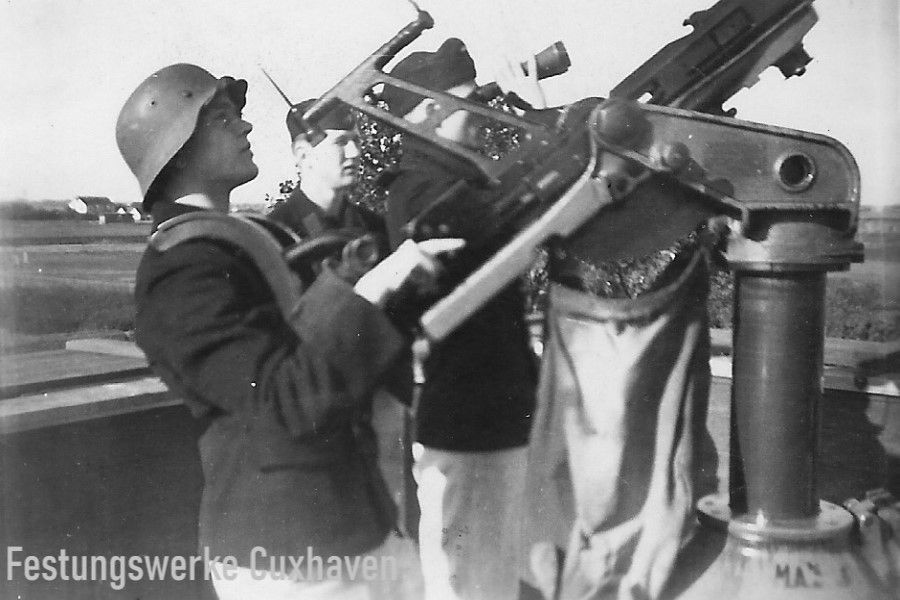
The gun is a 2 cm Flak 29 Oerlikon on a 40 base mount.Source: MB

In the right corner you can see the buildings of the minesweeper port.Source: MB

In the background the Elbe.Source: MB
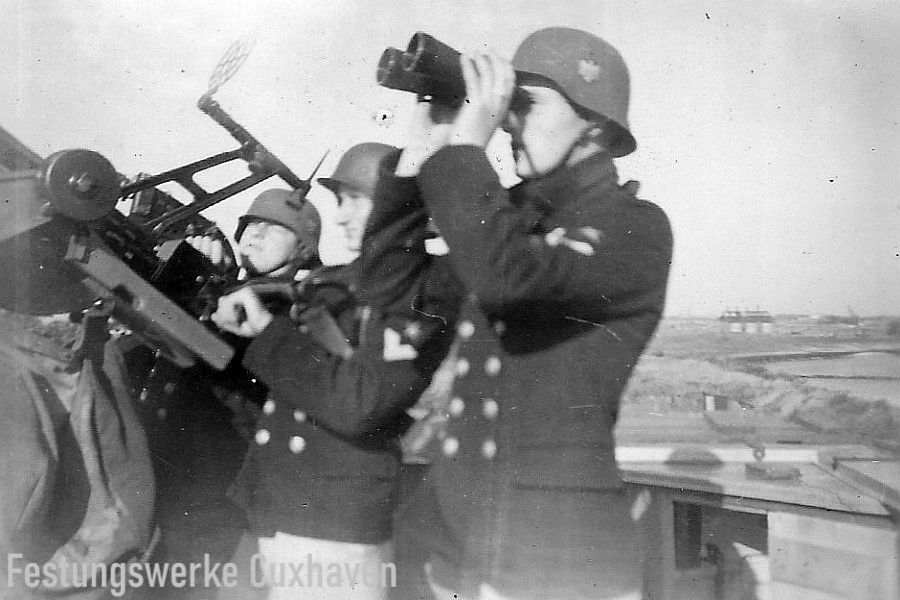
Judging by their appearance and uniform, these are naval helpers. In the background is the sloping protective dam of the eastern minesweeper port. Source: MB
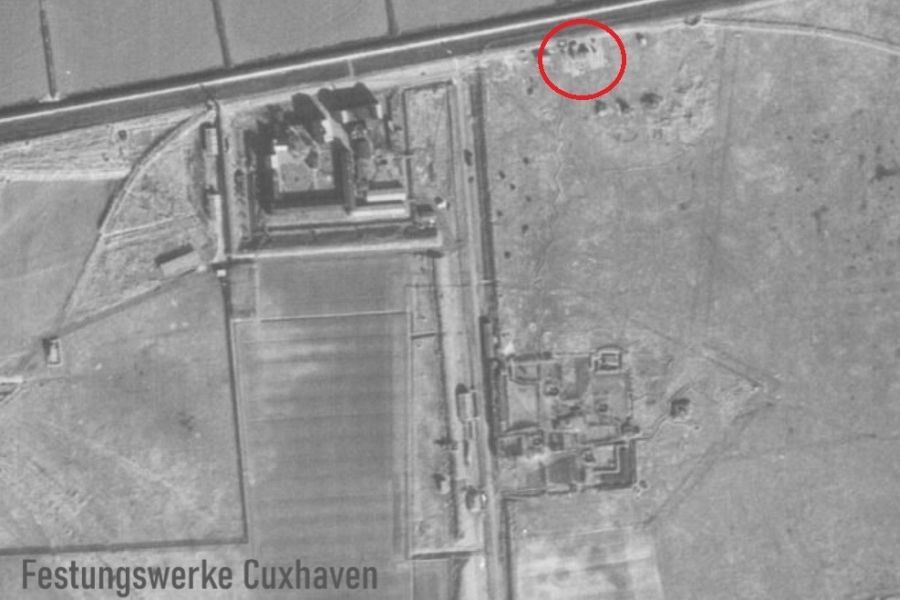
The 2 cm. anti-aircraft position at the Grodener Seebanddeich (red circle). On the left the quarantine station, below the heavy anti-aircraft battery. Source: MB
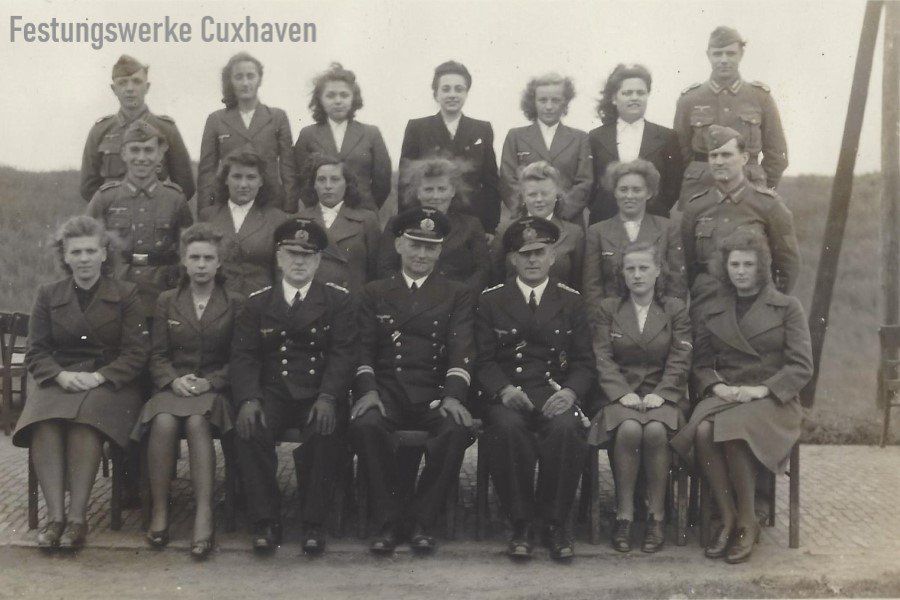
1944, Führungskräfte der Batterie Neufeld mit Marinehelferinnen auf einem Gruppenfoto.
Quelle: Dietrich Lücke jun.
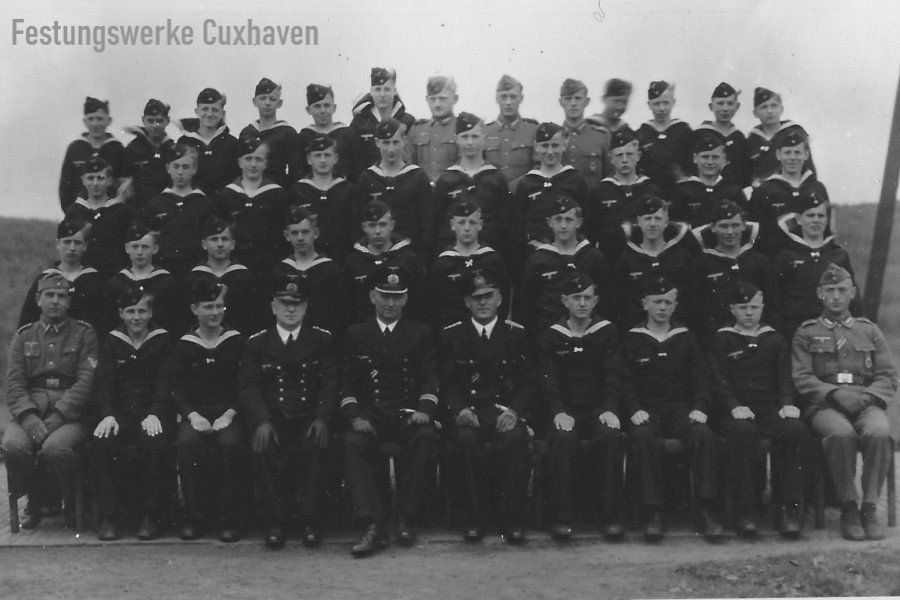
1944, the same leaders with naval anti-aircraft helpers. Many very young faces.Source: Dietrich Lücke jun.

1944, the almost complete battery crew in a group photo. Source: Dietrich Lücke jun.

Source: Dietrich Lücke jun.
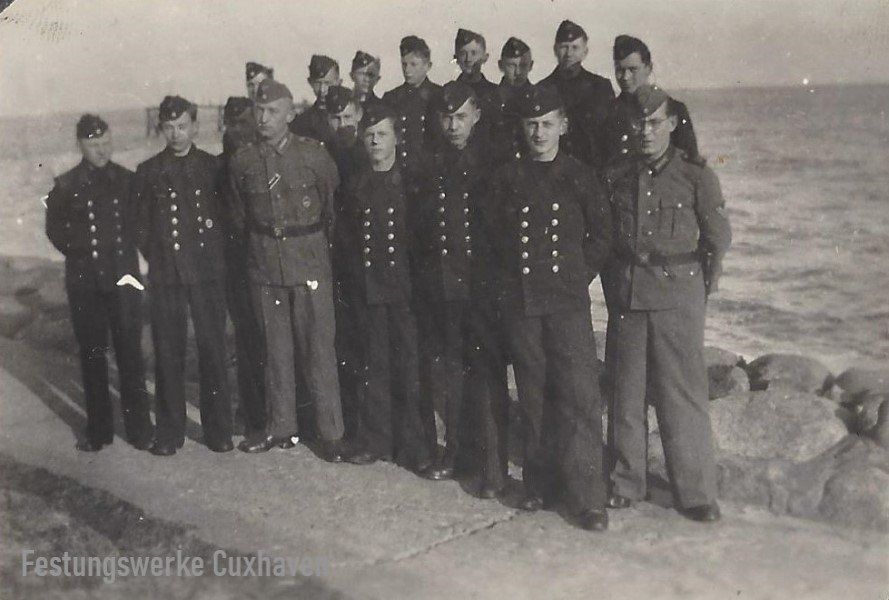
Source: Dietrich Lücke jun.
Picture above: On the left is the naval assistant Dietrich Lücke Sr., born in 1927. He took the group photos. Dietrich Lücke Sr. was a gunner in the Neufeld battery from January to October 1944. He ended the war as a senior ensign and commander on a torpedo boat.
Events from various official war diaries of the naval command 1939 - 1945
Bomb direct hit in light group 5 (Groden - Neufeld Schantung)
On August 3, 1943, British bombers attacked the city of Hamburg with around 950 aircraft during Operation Gomorrah. During this operation, several bombs were dropped near Groden-Neufeld at 1:33 a.m. The position of the anti-aircraft searchlight there (Light Group 5) was hit directly by a bomb. Seven soldiers were killed in the incident, one survived with serious injuries. One of the victims was the soldier Franz Krobatha from Styria in Austria.

26.10.41 - Apparently the same accident occurred in the Schantung-Pollux-Neufeld battery as in the Kugelbake battery. During a flat shot with the heavy anti-aircraft guns against a low-flying aircraft, the battery control station was hit. One soldier died and another was seriously injured.
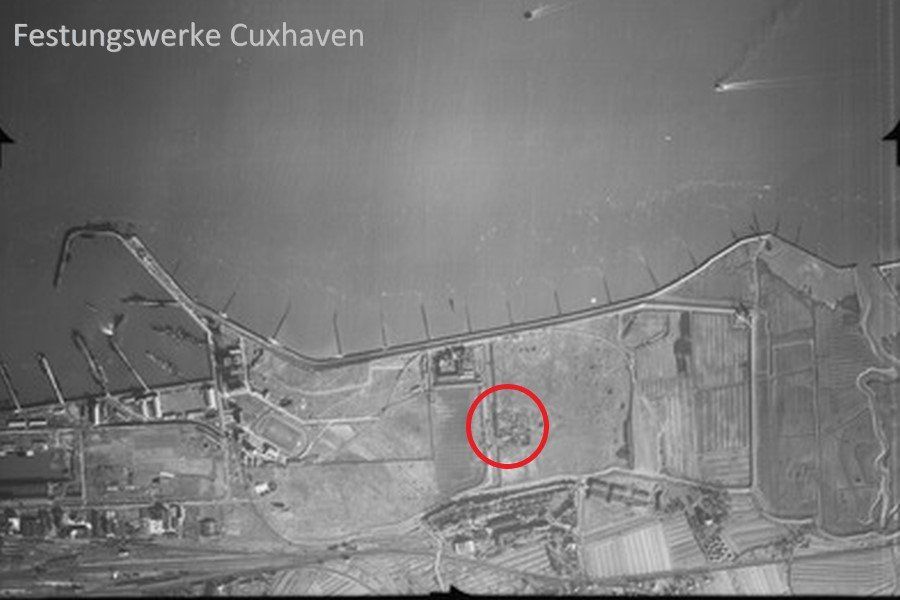
Aerial photo from 06.10.44Source: USAF
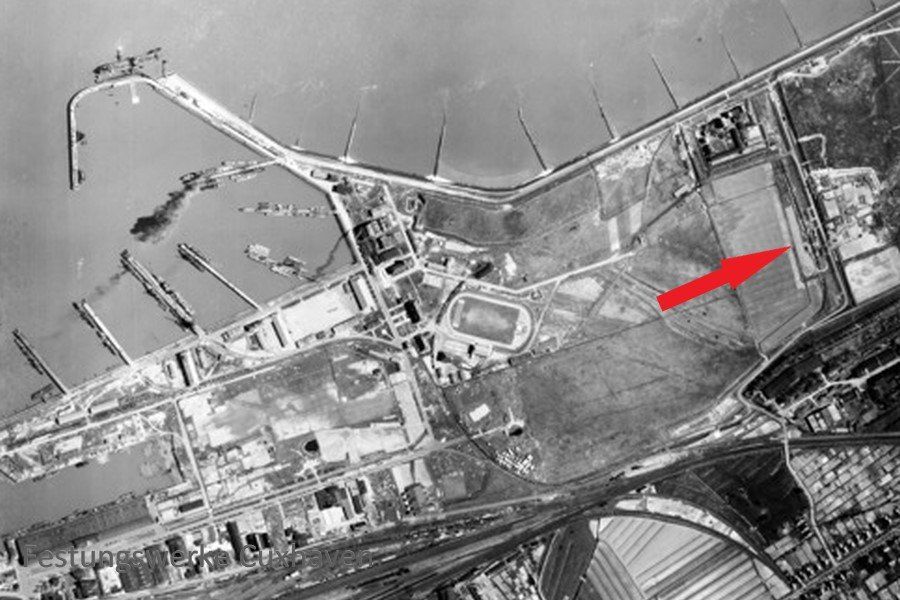
Aerial photo from 14.04.45Source: RAF
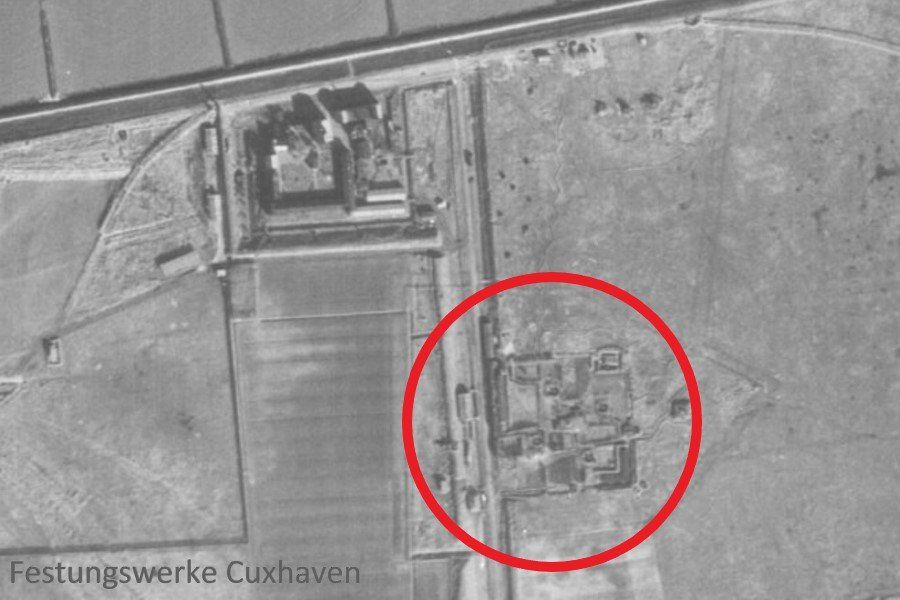
Aerial photo from 06.10.44Source: USAF
Satellitenbild von 2021, auch hier wurde
die Fläche bisher nicht neu bebaut.
Quelle: Google Earth
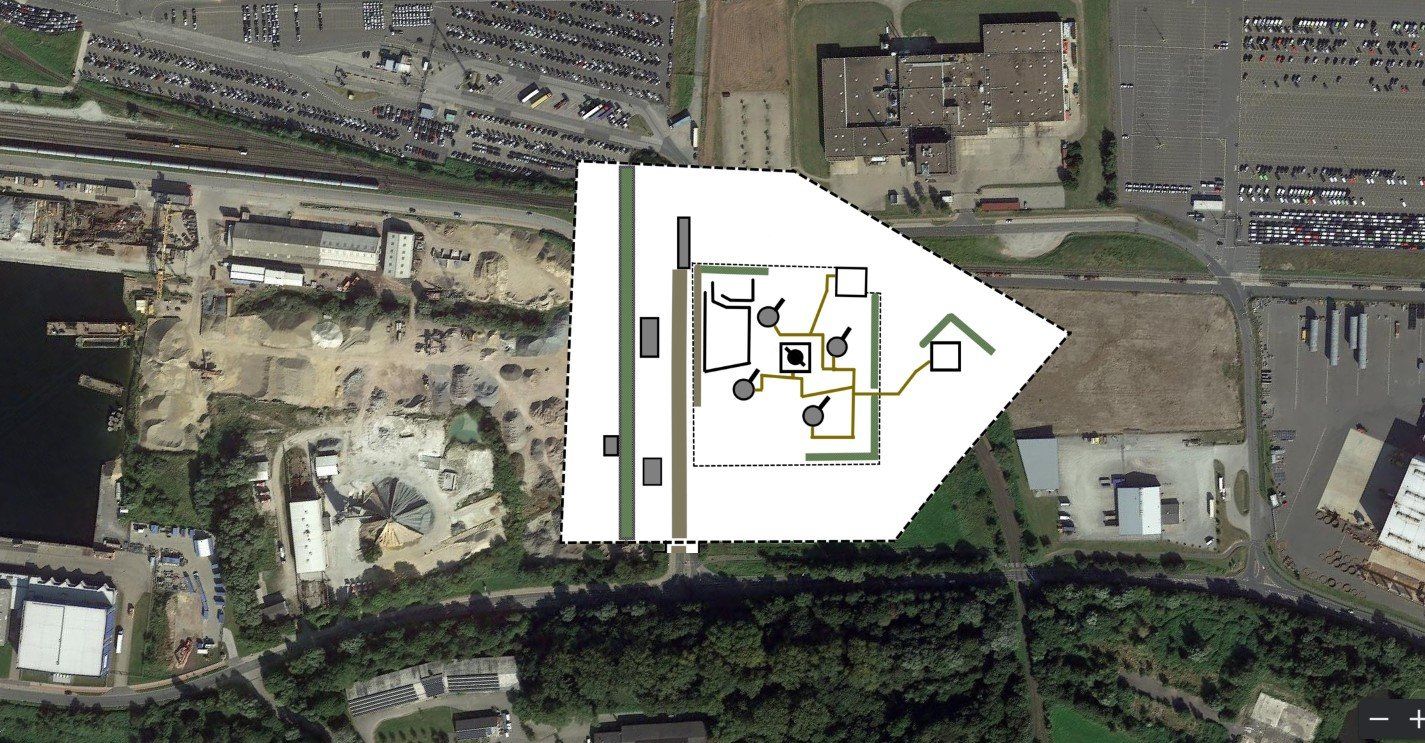
The position at that time was in the rear area of today's "New Fishing Port" and was provided with an embankment and a security fence. On the left side, living quarters, material sheds, kitchen and workshops. In the middle, the four heavy anti-aircraft guns with the command device in the center. On the far right, probably the ammunition bunker. In brown, some of the communication trenches.
The source of information about the Neufeldt battery ends at the end of 1940. There are also hardly any photos of the battery's interior (guns, measuring equipment, etc.), but attempts are still being made to complete this.



